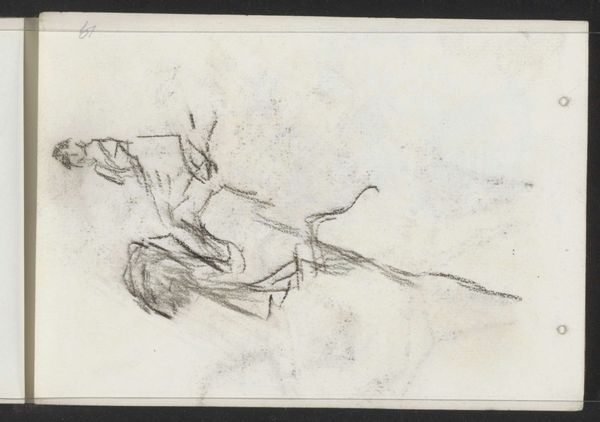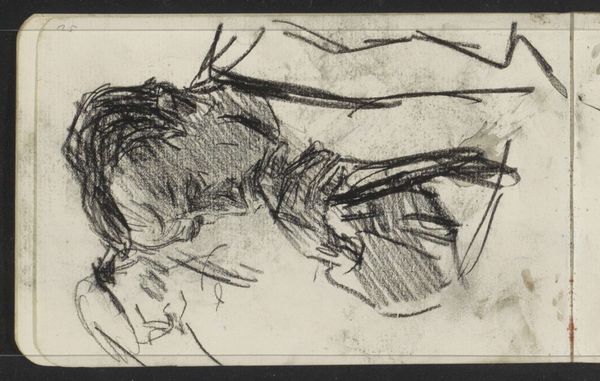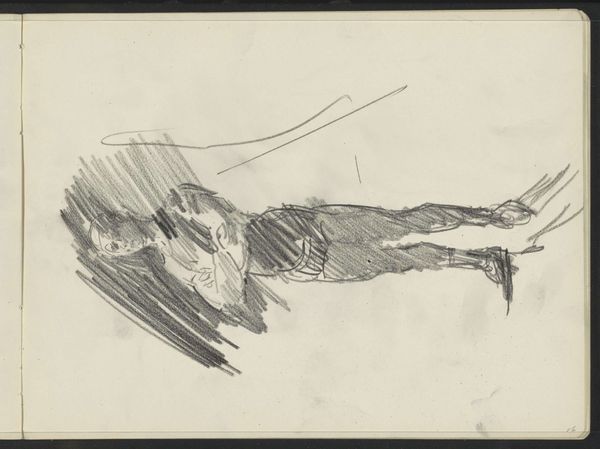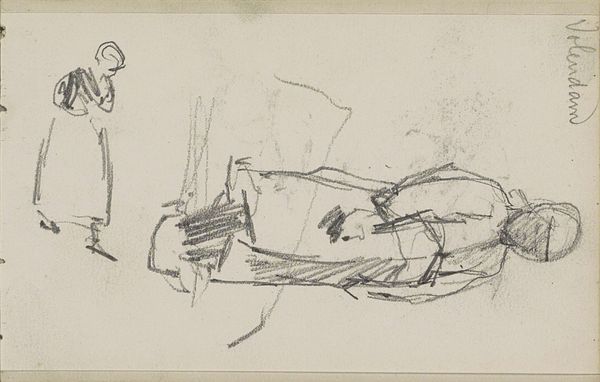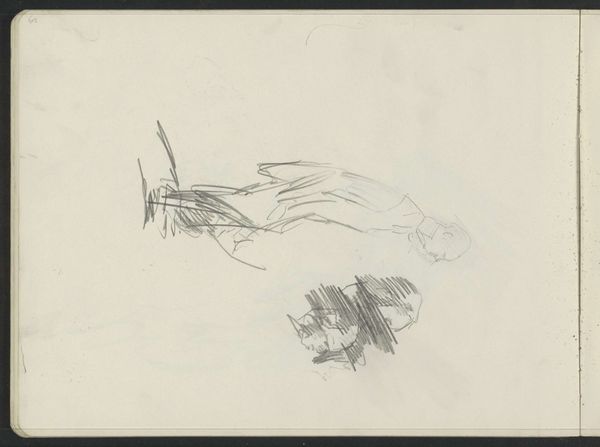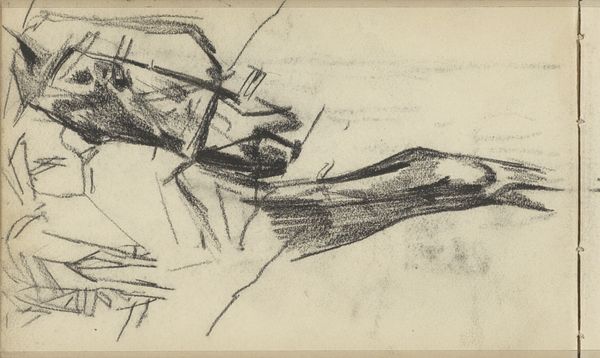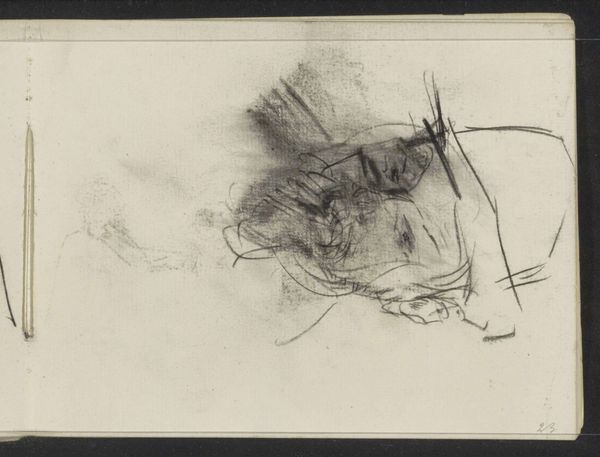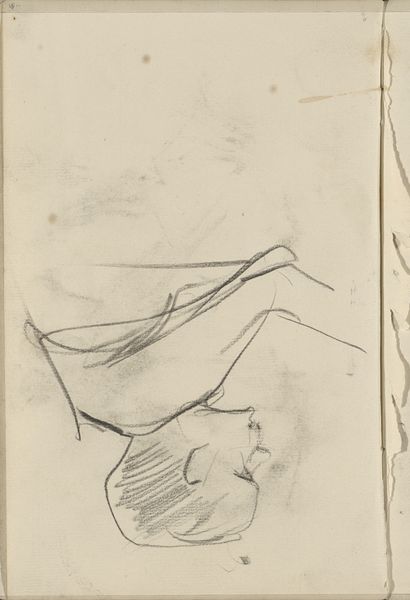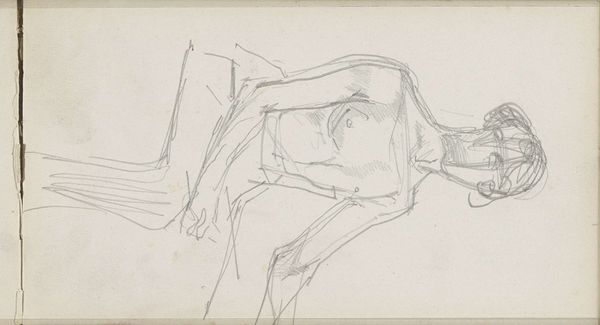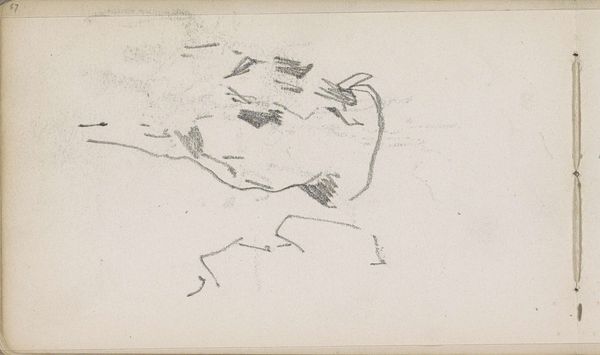
drawing, graphite
#
portrait
#
drawing
#
figuration
#
line
#
graphite
#
profile
Copyright: Rijks Museum: Open Domain
Curator: This graphite drawing is called "Man met pet voor een kat, in profiel", or "Man with hat in front of a cat, in profile." Isaac Israels likely produced it between 1875 and 1934. Editor: What immediately strikes me is the immediacy and fluidity of line; it's gestural and quick, a fleeting moment captured on paper. There's something incomplete, yet fully present in the form. Curator: The Rijksmuseum houses this sketchbook page. Israels was quite fond of sketching; he used it as a means of observing everyday life, capturing the nuances of social interactions and scenes that surrounded him. This piece, to me, speaks volumes about the process of artistic observation and production. It gives an idea of Israels' methodology, emphasizing his active engagement in shaping visual perception into a tangible, material object. Editor: I see it, too. Look closely at the layering of lines around the man's hat and the cat's form; see how Israels uses hatching and cross-hatching not just to build volume but also to suggest texture, the felt of the hat and perhaps the fur of the animal. Curator: I also see a certain level of class commentary present. Hats were symbols of profession and status. Here is this everyday working person caught unawares. This emphasizes labor and daily life which might be dismissed. The context within which Israels produced such sketches underscores how such daily experiences might get translated into art, questioning our definition of "fine" art versus sketching from life. Editor: The composition directs our eye. Notice how the man's gaze aligns nearly perfectly with the form of the cat, creating a visual harmony—a dialogue, even—between the two figures. Curator: What is revealed is not only an act of observation but also a testament to what society deemed worth noticing during his time, prompting discourse on value and visual literacy during that epoch. Editor: Ultimately, what we're left with is more than just a sketch; it’s a glimpse into a specific moment of creative perception. It exposes both the construction of forms and also what remains fundamentally inexpressible when translated into physical reality. Curator: Very well put! I leave considering how our definitions of "art" is perpetually negotiated given the time, materials, and labour—a sketch carries the history of interactions within the material and socio-economic dimensions.
Comments
No comments
Be the first to comment and join the conversation on the ultimate creative platform.
